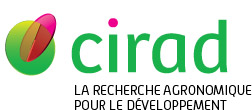ChafiK A., Essamadi Abdel Khalid, Eddoha R., Bagri A., Nasser B., Faye Bernard, Bengoumi Mohammed. 2015. Trace elements and heavy metals in organs of camels (Camelus dromedaries) slaughtered in Casablanca city, Morocco. Veterinariâ, 42 (2), n.spéc. Silk road camel: The camelids, main stake for sustainable development : 170-172. 4th Conference of the International Society of Camelid Research and Development/ISOCARD 2015. 4, Almaty, Kazakhstan, 8 Juin 2015/12 Juin 2015.
|
Version publiée
- Anglais
Utilisation soumise à autorisation de l'auteur ou du Cirad. ID577403.pdf Télécharger (3MB) |
Titre kazakh : [Titre en Kazakh] / Titre russe : [Titre en Russe]
Note générale : Résumés disponibles en Kazakh et en Russe
Résumé : The present work was carried out to determine the concentrations of trace elements (copper and zinc) and heavy metals (cadmium and lead) in the different organs of camel slaughtered in municipal slaughterhouse of Casablanca, which is the main source of consumption of camel meat in the study area. The samples of meat, liver, lung, heart and kidney of 30 camels were collected. All the samples were digested, mineralized and analyzed for minerals using an Inductively Coupled Plasma - Atomic Emission Spectroscopy. The concentrations of trace elements and heavy metals ranged from 1.10 to 14.22 ppm for copper, 4.05 to 10.88 ppm for zinc, 0.023 to 0.69 ppm for cadmium and 0.71 to 1.33 ppm for lead. Few data are available in literature on copper and zinc concentrations in different organs of camel. The highest concentration of copper was observed in liver. For zinc the highest concentrations being recorded in meat and liver. Regarding cadmium and lead concentrations in different organs of camel, it is difficult to link our results to polluting context, because no data on these elements in camel organs available. However, the concentrations of cadmium in kidney and liver were higher than that observed in other organs. For lead, the highest concentration was observed in liver.
Mots-clés Agrovoc : dromadaire, composition de la carcasse, teneur en éléments minéraux, oligo-élement, composition chimique, zinc, cadmium, plomb, cuivre, métal lourd, contamination chimique, Camelus dromedarius
Mots-clés géographiques Agrovoc : Maroc
Classification Agris : Q03 - Contamination et toxicologie alimentaires
Q04 - Composition des produits alimentaires
L50 - Physiologie et biochimie animales
Champ stratégique Cirad : Axe 3 (2014-2018) - Alimentation durable
Auteurs et affiliations
- ChafiK A., Université Hassan 1 (MAR)
- Essamadi Abdel Khalid, Université Hassan 1 (MAR)
- Eddoha R., Université Chouaïb Doukkali (MAR)
- Bagri A., Université Hassan 1 (MAR)
- Nasser B., Université Hassan 1 (MAR)
- Faye Bernard, CIRAD-ES-UMR SELMET (SAU)
- Bengoumi Mohammed, FAO (TUN)
Autres liens de la publication
Source : Cirad-Agritrop (https://agritrop.cirad.fr/577403/)
[ Page générée et mise en cache le 2024-03-26 ]




